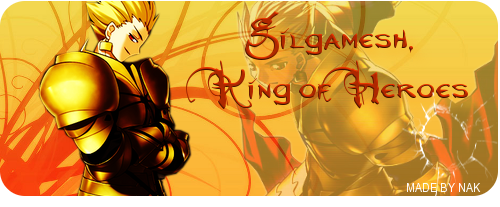Post by 斎藤 一 on Jan 14, 2011 16:48:54 GMT -5
Assassin

"I was the only one of the Shinsengumi said to be immortal."

"I was the only one of the Shinsengumi said to be immortal."

OTHER ALIAS: //[/color] The Wolf of Mibu
CURRENT AGE: //[/color] 27 (183)
YEAR OF BIRTH: //[/color] 1844
GENDER: //[/color] Male
ALIGNMENT: //[/color] Neutral Good
OCCUPATION: //[/color] Captain of the Shinsengumi’s Third and Fourth Units; National and International Assassin and Spy; Police Officer; Kenjutsu Instructor; Museum Curator.[/size][/ul]

HEIGHT: //[/color] 187cm (6'2")
WEIGHT: //[/color] 80kg (175lbs)
EYE COLOR: //[/color] Hazel
HAIR COLOR: //[/color] True Black
PIERCINGS: //[/color] N/A
TATTOOS: //[/color] N/A
DISTINGUISHING FEATURES: //[/color]
[/size][/ul][/blockquote]

“The essence of combat is to strike at the enemy’s weakness!
There is no ‘fair’ or ‘unfair.’
Now die for your ignorance.”
There is no ‘fair’ or ‘unfair.’
Now die for your ignorance.”
- Wolf of Mibu
- As Captain of the Shinsengumi’s Third Unit as well as the person entrusted with hunting down and killing traitors and dishonored Shinsengumi, Saitō's name was synonymous with death. Quiet and reserved, he is a man who hates useless talk. He venomously hates cowards and traitors and believes them to be the lowest scum in existence, deserving of nothing but a curt, sudden, and silent death. His title as a Wolf of Mibu also symbolizes his unbreakable resolve as a man who must put down evil without exception.
- True Samurai
- A staunch follower of the Bushido Code, Saitō's honor, integrity, bravery, and resolve are of the highest caliber. He is one of the "Last Great Samurai" because of his unparalleled skill with the sword and his unrelenting iron will. This also puts him at odds with certain battle tactics, as he will refuse any deviation from his Code.
- Aku Soku Zan
- Saitō's personal Code of Honor and his brand of justice. When forced to chose between Aku Soku Zan and Bushidō, Saitō will always chose the former. He wields his sword not for a government or cause, but simply to stamp out those that he deems evil. Despite being one of their greatest enemies, Saitō served the new Meiji Government as a spy, assassin, and police officer. He slew anyone who dared take advantage of the budding government and its people. He compared the job to “burning ticks off of Japan’s back.” Aku Soku Zan means “A Swift Death to Evil,” and Saitō delivers that punishment mercilessly, regardless of who or what that person stands for.
- Pride
- Saitō's pride can be considered one of this strongest defining characteristics. He will not retreat from battle even when confronted with imminent death. Nor is he one to give mercy to any who challenges him. Even as a Servant he will refuse to follow anyone who he deems unworthy. He will stay his blade if ordered once or possibly twice, but doing so repeatedly will cost Command Seals - such is his unwavering dedication to his honor.
LIKES: //[/color]
Honor
Soba Noodles
Cigarettes
Alcohol
Strength of Heart and Mind
Western Idealism (Parts of it)
DISLIKES: //[/color]
Cowards
Traitors
The Uncaring and Corrupt
Current Japan
STRENGTHS: //[/color] Saitō Hajime was famed as one of the greatest swordsmen of his time and beyond. He is one of the "Last Great Samurai." He boasts unparalleled skill with the blade, to the point where his own technique could actually surpass the speed of Okita Souji’s Sandanzuki, which was able to strike three places simultaneously. He is an excellent judge of character and will refuse to serve anyone but those he deems honorable - anyone else he will simply kill without hesitation or even himself if necessary. Saitō's history as a spy and assassin are further amplified by the abilities of his Class, allowing him access to modern espionage and assassination techniques comparable to a highly-trained international agent. Moreover, his own Code does not disdain the use of technology and he has no qualms about taking advantage of it to suit his needs.
WEAKNESSES: //[/color] In melee-combat, Saitō's ability is of the highest level. But even as a Heroic Spirit he has little magic resistance. His Luck and Mana ratings are abysmal when compared to other Servants, so his greatest weakness is his inability protect himself from Mysteries that manipulate those stats and will require a Master's assistance during such crucial times. Essentially, a Servant of the Caster Class is his nemesis. Since Saitō's forte is melee combat, ranged assaults are another problem. As an Assassin, he does not have any special weaponry thus his swords are far more prone to battle damage which reduces the effectiveness of his attacks, albeit the blades can be restored over time.[/ul][/size][/blockquote]

MY LEGEND: //[/color] Aku Soku Zan!
MY HISTORY: //[/color] Born in 1844, Saitō Hajime was a samurai of late feudal Japan. Prior to becoming the infamous Captain of the Shinsengumi’s Third Unit, Saitō was a humble kenjutsu instructor. However, his violent idealism was born even before that, as he killed one of the Tokugawa’s vassals after discovering the man was trafficking drugs. He participated in a number of political movements, gaining the favor of multiple factions and establishing an information network. He quickly became skilled in espionage and assassination, continuing to hone his swordsmanship veiled behind the shadow of politics. He chose to kill whoever he deemed corrupt and evil. While this did not sit well with certain politicians, a freelancing well-connected and well-informed assassin proved aptly useful.
His loyalties began to favor the Tokugawa Government and he was eventually recruited by the Shinsengumi to serve as its Third Unit Captain. Among his duties as a Captain of the Shinsengumi, Saitō was also tasked with information gathering, espionage, and assassination. Another prominent role was the hunting down and killing of dishonored and treacherous Shinsengumi members. Like all Shinsengumi, Saitō firmly believed that by killing evil immediately and mercilessly, he carried out divine justice on behalf of those that could not. And when his fellow Shinsengumi became weak of heart, Saitō acted appropriately, slaying them without a single hesitation. It earned him the title of The Wolf of Mibu, which soon became the nickname of the Shinsengumi.
As a swordsman, Saitō was renown for being one of the greatest of his generation. Okita Sōji was often used as a comparison - a young prodigy who developed the Sandanzuki, a Demonic Sword Technique capable of striking three places at once. Even in the face of such inhuman skill, Saitō Hajime was rumored to be the better of the two. His own personal technique, the Gatotsu, was so fast and unpredictable that it could counter Sandanzuki as it was being used. These rumors were unsubstantiated as neither had a reason to fight to the death. "It would be a shame for the two of us to kill each other without cause." Saitō was quoted saying, leading many to believe that a death-match would end in mutual destruction. Nevertheless, Okita would not deny Saitō's superior swordsmanship and strategic aptitude, publicly admitting that “Sandanzuki is useless against The Wolf of Mibu. He’s seen it too many times.”
When the Tokugawa Era came to a close, Saitō served as a commander until the very last of the Tokugawa’s reign came crashing down at the Battle of Aizu. He continued his struggle, leading the remnants of the Shinsengumi at Aizuwakamatsu Castle. He and his forces were beaten back into a small temple and Saitō was recorded to have been run through several times after sprinting past three ranks of enemies and using his legendary thrust on the their leader, sending his blade between his adversary's eyes as he was cut down. Truthfully, Saitō's blade broke in half and out of sheer force of will, he transformed the Gatotsu into a projectile attack, thrusting his useless sword into the enemy lines. The fact that he impaled the enemy commander square in the forehead was more improbable luck than skill. He managed to regroup with the Aizu military. When ordered to surrender, Saitō finally laid down his blade, accepting his fate a prisoner of war. In one final act of defiance, he registered his name as Ichinose Denpachi - Saitō Hajime had died in battle that day.
He was eventually released and chose to serve the budding Meiji Government as Fujita Gorō - a police officer and assassin. Like before, he cared little for the politicians and their plans. Saitō, no matter what his name, would always be The Wolf of Mibu. Like a wolf, he hunted down any corrupt political official he could find, reminding the Meiji Government: no matter the time and place, A Swift Death to Evil will always live on. He was instrumental in resolving several unrecorded international incidents and helped to stem the tide of Japanese piracy. One of his last performances on the battlefield was during Satsuma’s Rebellion.
A family man and retired police officer at 63, Saitō lost his right to carry a blade and decided to work as a university professor. He also became a curator specializing in sword appraisal. He is believed to have died relatively peacefully, sitting in seiza in his living room. In truth, Saitō chose to brandish his blade of justice one final time, killing a gang of men who were raping a waitress in a back alley. Unarmed, Saitō beat the trio to death with his barehands. His final opponent managed to run him through the stomach with a tantou. Laughing at the unexpected gift, Saitō retrieved it and unleashed his last Gatotsu, slamming the man with so much horizontal force that it shattered all the bones in his left arm as the rapist's upper half was sent flying several meters down the alleyway. At her savior's request, the young lady carried him back to his home. He demanded she leave him in the living room and prepare tea.
Age 71, Saitō Hajime passed away at the table, under the honey-sweet scent of fresh tea and an old cigar he had been saving for that moment.
"…Without hesitation you uphold your belief.
Saitō Hajime, a man who lives by the sword…
In this peaceful era, can you keep your Aku Soku Zan…?”
“Of course. Until the day I die."
Saitō Hajime, a man who lives by the sword…
In this peaceful era, can you keep your Aku Soku Zan…?”
“Of course. Until the day I die."
MY GOALS: //[/color] To brandish Aku Soku Zan once more.
"What gives strength to the Wolf of Mibu is not the Gatotsu.
It is the Justice of just three words.
The Justice that remained even after the total annihilation of the Shinsengumi.
The Justice that could not be destroyed even by the turning of an age,
where death by the sword was deemed 'unjust.'
The Justice of 'Aku Soku Zan.'"
[/size][/blockquote]It is the Justice of just three words.
The Justice that remained even after the total annihilation of the Shinsengumi.
The Justice that could not be destroyed even by the turning of an age,
where death by the sword was deemed 'unjust.'
The Justice of 'Aku Soku Zan.'"

Daishō - A two-sword - Katana and Wakizashi - pairing. A common marriage of swords used by samurai during feudal Japan. While they can be duel-wielded, their original purpose was to serve two different types of battlefields: indoor and outdoor. The katana was considered too long to properly utilize in enclosed spaces, so the wakizashi was created to act as a side-arm. Both are nameless, E Ranked weapons.
NOBLE PHANTASM: //[/color]
Gatotsu (Piercing Fang) - The Perfect Parallel Thrust
Rank: N/A
Type: Anti-Unit
Range: 55/75cm (Wakizashi/Katana)
Max Targets: 1
The legendary, left-handed thrust of Saitō Hajime, who's attack speed was said to surpass Okita Sōji's Sandanzuki, another Demonic Sword Technique which thrusts at three different points simultaneously. Originally a Demonic Sword Technique based on the Shinsengumi‘s famous "Hirazuki," but the stories and legends of Saitō's life have promoted the skill to the level of a Noble Phantasm.
It is a Demonic Sword Technique that strikes an opponent from any angle and at any point with reality-defying speed. Unlike Sandanzuki and Tsubame Geashi which both use Multi-Dimensional Refraction to strike at several places simultaneously, Gatotsu only utilizes Dimensional Refraction. The technique momentarily bends the laws of reality to allow Saitō to thrust at the opponent from any opening, regardless of whether or not Saitō can physically strike at that spot. While lacking the obvious power of other Demonic Sword Techniques, the Gatotsu an extremely flexible strike that covers every spectrum of melee combat (offensive, defensive, counteroffensive, counterdefensive). It cannot travel straight through objects, but can go around them as long the target is within the attack range - an opponent cannot simply "parry" the attack. However, if he is surrounded by a universal barrier, the Gatotsu can be blocked. In the case of a large obstacle, such as a wall, the Gatotsu must first pierce the wall before actually hitting the target, which can hinder the strike depending on the Armor Class of the obstacle.
Stance is one prerequisite to using the Gatotsu. Saitō must take a few milliseconds disengage his blade and assume the correct posture. He then angles the blade's tip in the general direction that he wants to strike at. While the process is barely noticeable during combat, it does telegraph Gatotsu's target and gives the opponent that time to realize a "deadly attack is going to be used" right before Gatotsu is activated. Although there is a subtle warning prior to its activation, completely blocking or dodging the Gatotsu without having a combination of incredible speed and high Ranked intuition (Eye of the Mind Fake; Instinct, etc.) is still extremely difficult and nigh impossible. However, an opponent without those Personal Skills and Abilities does stand a chance at surviving a potentially instantaneous death if they can detect the danger in time.
Essentially, Saitou takes a stance, aims, and thrusts, stabbing anywhere in the given range. The target area is predetermined and unchangeable, but the Gatotsu “goes around” obstacles and attempts to deflect or block the strike.
It is possible to develop countermeasures to Gatotsu after it is used once during battle (Saitō's first usage for that fight severely restricts opponent's perceptive abilities.). After its first use, Gatotsu's effectiveness drops considerably and becomes susceptible to combat logic Skills (Based on the Rank of enemy's Skills verses Saitō's.). Overall, the Gatotsu is lower in power and speed than Sandanzuki and Tsubame Gaeshi but far more flexible as it does not need level footing to properly execute nor does it have a restricted type of use.
Fundamentally, the Gatotsu can be simplified as a "physically impossible thrust." By itself, it has no other ability besides allowing Saitō to strike at an opponent's weakness at that exact moment. But when combined with Saitō's Personal Skills (Knowledge of Heart of Harmony and Eye of the Mind (True)), it becomes an "imperceptible physically impossible thrust perfectly timed to deliver instant death to the enemy." This gives the Demonic Sword Technique the illusion of being impossible to defend against. As it is an ability born from pure god-like skill, it has no Prana Cost aside from what Saitō needs to move.
It is a Demonic Sword Technique that strikes an opponent from any angle and at any point with reality-defying speed. Unlike Sandanzuki and Tsubame Geashi which both use Multi-Dimensional Refraction to strike at several places simultaneously, Gatotsu only utilizes Dimensional Refraction. The technique momentarily bends the laws of reality to allow Saitō to thrust at the opponent from any opening, regardless of whether or not Saitō can physically strike at that spot. While lacking the obvious power of other Demonic Sword Techniques, the Gatotsu an extremely flexible strike that covers every spectrum of melee combat (offensive, defensive, counteroffensive, counterdefensive). It cannot travel straight through objects, but can go around them as long the target is within the attack range - an opponent cannot simply "parry" the attack. However, if he is surrounded by a universal barrier, the Gatotsu can be blocked. In the case of a large obstacle, such as a wall, the Gatotsu must first pierce the wall before actually hitting the target, which can hinder the strike depending on the Armor Class of the obstacle.
Stance is one prerequisite to using the Gatotsu. Saitō must take a few milliseconds disengage his blade and assume the correct posture. He then angles the blade's tip in the general direction that he wants to strike at. While the process is barely noticeable during combat, it does telegraph Gatotsu's target and gives the opponent that time to realize a "deadly attack is going to be used" right before Gatotsu is activated. Although there is a subtle warning prior to its activation, completely blocking or dodging the Gatotsu without having a combination of incredible speed and high Ranked intuition (Eye of the Mind Fake; Instinct, etc.) is still extremely difficult and nigh impossible. However, an opponent without those Personal Skills and Abilities does stand a chance at surviving a potentially instantaneous death if they can detect the danger in time.
Essentially, Saitou takes a stance, aims, and thrusts, stabbing anywhere in the given range. The target area is predetermined and unchangeable, but the Gatotsu “goes around” obstacles and attempts to deflect or block the strike.
It is possible to develop countermeasures to Gatotsu after it is used once during battle (Saitō's first usage for that fight severely restricts opponent's perceptive abilities.). After its first use, Gatotsu's effectiveness drops considerably and becomes susceptible to combat logic Skills (Based on the Rank of enemy's Skills verses Saitō's.). Overall, the Gatotsu is lower in power and speed than Sandanzuki and Tsubame Gaeshi but far more flexible as it does not need level footing to properly execute nor does it have a restricted type of use.
Fundamentally, the Gatotsu can be simplified as a "physically impossible thrust." By itself, it has no other ability besides allowing Saitō to strike at an opponent's weakness at that exact moment. But when combined with Saitō's Personal Skills (Knowledge of Heart of Harmony and Eye of the Mind (True)), it becomes an "imperceptible physically impossible thrust perfectly timed to deliver instant death to the enemy." This gives the Demonic Sword Technique the illusion of being impossible to defend against. As it is an ability born from pure god-like skill, it has no Prana Cost aside from what Saitō needs to move.
"The Hirazuki developed by Shinsengumi Commander Hijikata Toshizō was said to be an unbreakable, invincible thrust that attacked and countered all possible actions an enemy could take.
But my Gatotsu is greater still."
But my Gatotsu is greater still."
CLASS ABILITIES: //[/color]
- Presence Concealment - The capacity to hide one's presence as a Servant.
- C:
"Justice - MY justice will not be limited by a courtroom.
Didn't you know?
Wolves hunt in the dark."
Didn't you know?
Wolves hunt in the dark."
SKILLS: //[/color]
- Gatotsu - The Perfect Parallel Thrust.
- A+++:
"I did not create the Gatotsu.
It was born from countless battles with the greatest swordsmen.
It is a fang sharpened to the utmost against the stone called adversity."
It was born from countless battles with the greatest swordsmen.
It is a fang sharpened to the utmost against the stone called adversity."
[/li][li]Eye of the Mind (True) - Heightened insight that was refined through experience.
- B+: Conditional modifier doubles Eye of the Mind (True)'s effectiveness verses an enemy’s anti-perception Personal Skills and Abilities (Knowledge of Heart and Harmony; etc) if the same attack is used more than once and/or if the attack is observed preemptively.
"No, I can't read minds.
All I have is the intuition a swordsman gains after barely surviving thousands of battles.
Any weakness you have - I’ll be sure to exploit it, or create one for you."
All I have is the intuition a swordsman gains after barely surviving thousands of battles.
Any weakness you have - I’ll be sure to exploit it, or create one for you."
[/li][li]Bravery - Capacity to resist mental interference such as pressure, confusion and fascination.
- B:
"It is the law of the Shinsengumi to always follow the Code of Bushidō!
Turning your back to the enemy isn’t an option!
At the very least, we will die facing them!"
Turning your back to the enemy isn’t an option!
At the very least, we will die facing them!"
[/li][li]Knowledge of Heart and Harmony - Prevents a decrease in the effectiveness of a technique, regardless how many times it is used against the same opponent.
A:
[/li][li]C+: Attacks are difficult to perceive. Bonus Effect of further reducing the effectiveness of analytical and reflexive Personal Skills and Abilities (Eye of the Mind True/Fake; Instinct; etc.). Conditional modifier doubles this Skill's effectiveness and Saitō's attack damage the first time Gatotsu is used in that battle.
"What happened to that confidence?
You can’t read my movements with just this small variation?
Pathetic."
You can’t read my movements with just this small variation?
Pathetic."
STRENGTH: //[/color] C
ENDURANCE: //[/color] C
AGILITY: //[/color] A
MANA: //[/color] E
LUCK: //[/color] E
NOBLE PHANTASM: //[/color] N/A[/blockquote]

PLAYER'S NAME: //[/color] Fire_Lotus
FACE CLAIM: //[/color] Saitō Hajime (Rurouni Kenshin)
OTHER CHARACTERS: //[/color] Tyonis Reybrant (Master of Archer)
MISC. INFORMATION: //[/color] Slaughtered a few bits of Japanese history. It's fine. That's what fantasy worlds are for. If necessary, will move character to W2.
Conversion into a Heroic Spirit: Saitō Hajime was originally only a talented samurai - famous simply for being one of the greatest of his age. Other than that, he was just a skilled soldier. However, the combination of his actual deeds; his Demonic Sword Technique; the embellishments surrounding his life; and the subsequent popularization and worship of his skills and ideals have promoted him to the level of a Heroic Spirit despite not technically having a Noble Phantasm. He truly is "One of the Last Great Samurai."[/i][/b] Those without analytical and sixth sense Personal Skills and Abilities can also defend themselves from the Gatotsu by heavily relying on the telegraph and the split-second pause Saitō takes in order to set up the technique. Note that this does not mean any regular Servant can dodge or block it - even those with high Ranks in Agility will find it extraordinarily difficult to completely evade the Gatotsu, but they will be able to mitigate the damage somewhat. At the very least, such Servants can avoid an instant death.[/ul][/sub](Source: Cbox discussion/Evaluation)[/blockquote][/size][/ul]
Servant Irregularity: Like the 5th Heaven’s Feel Assassin, Saitō is an abnormality in the system created from the Holy Grail's increased corruption and the use of the catalyst related to him. Since he is a skill-based Servant with anecdotes as an actual assassin, the Grail approved of his summoning and found it suitable to recreate him as a member of the Assassin Class.
Motivation and Capability: While most Assassin Servants are unsuited for direct combat, both Saitō and Kojirō are more than capable of holding their own against Servants thanks to their god-like skills with the sword. In Unlimited Blade Works, Kojirō repels multiple Servants, earning Lancer's personal admiration and ire. He was even able to push back Berserker despite not having a Ranked Noble Phantasm. As another swordsman who became a Heroic Spirit through pure god-like skill, Saitō's combat capacity is much the same. The main difference between the two are their limitations and attitudes. Even while Kojirō was confined to the gates of Ryūdō Temple, he was content to act as a guardian simply because it gave him the chance to fight. Saitō is not bound to a specific area and cares only for his honor and brand of justice. He will not sit idly by and watch the world pass like Kojirō - nor does he have to.
Countering Gatotsu: As mentioned above, an enemy can predict the Gatotsu and act accordingly if they have the appropriate Skill set for it. High Rank Personal Skills and Abilities such as Instinct and Eye of the Mind (Fake) qualify since they run along the lines of a reflexive sixth sense. Eye of the Mind (True) does not begin to register and account for the Gatotsu until AFTER it is activated, as it is an analytical sixth sense based on combat logic that forms solutions from recorded and perceived information. To truly counter Gatotsu, an enemy must deal with Saitō's Knowledge of Heart of Harmony. If it is nullified or canceled out, the Gatotsu becomes far easier to defend against. If one can pressure Saitō enough to keep his blade engaged, then the Gatotsu cannot be used at all. It is also safe to assume that once the stance is taken, the technique will be activated at the first opportunity.Or you can just cut off his left arm, Nak.

























